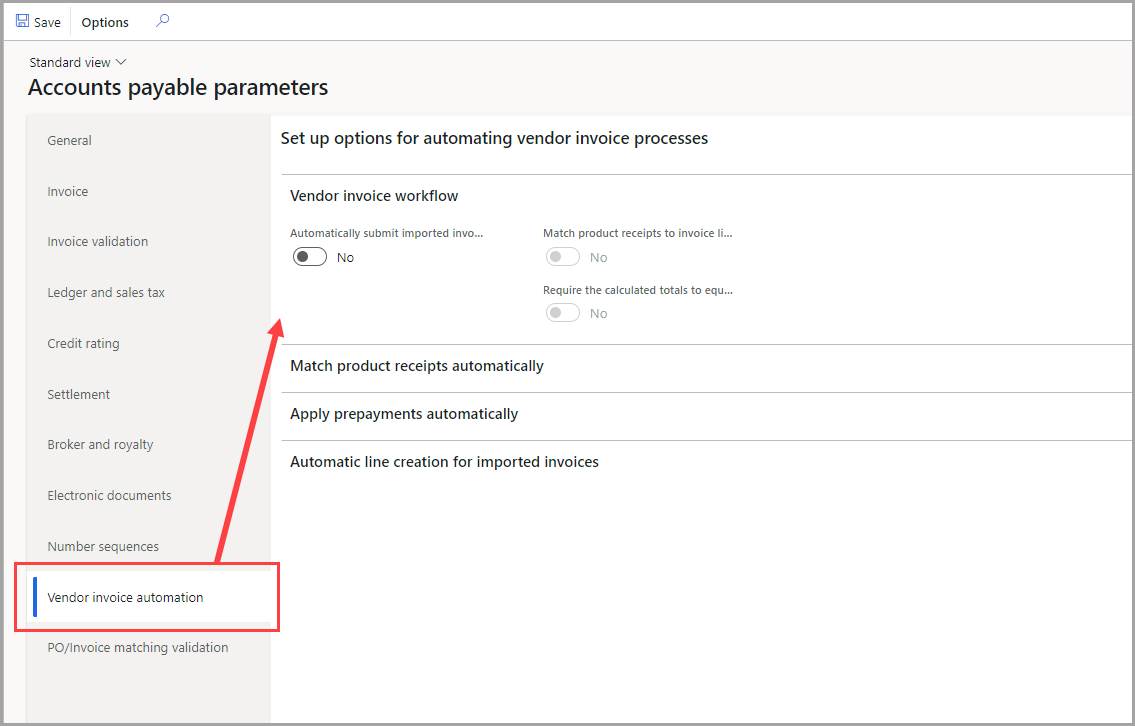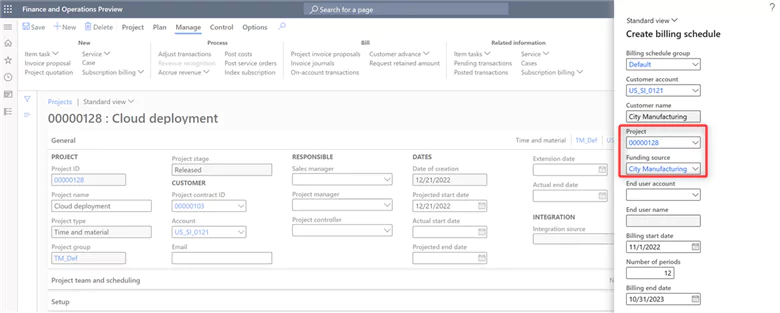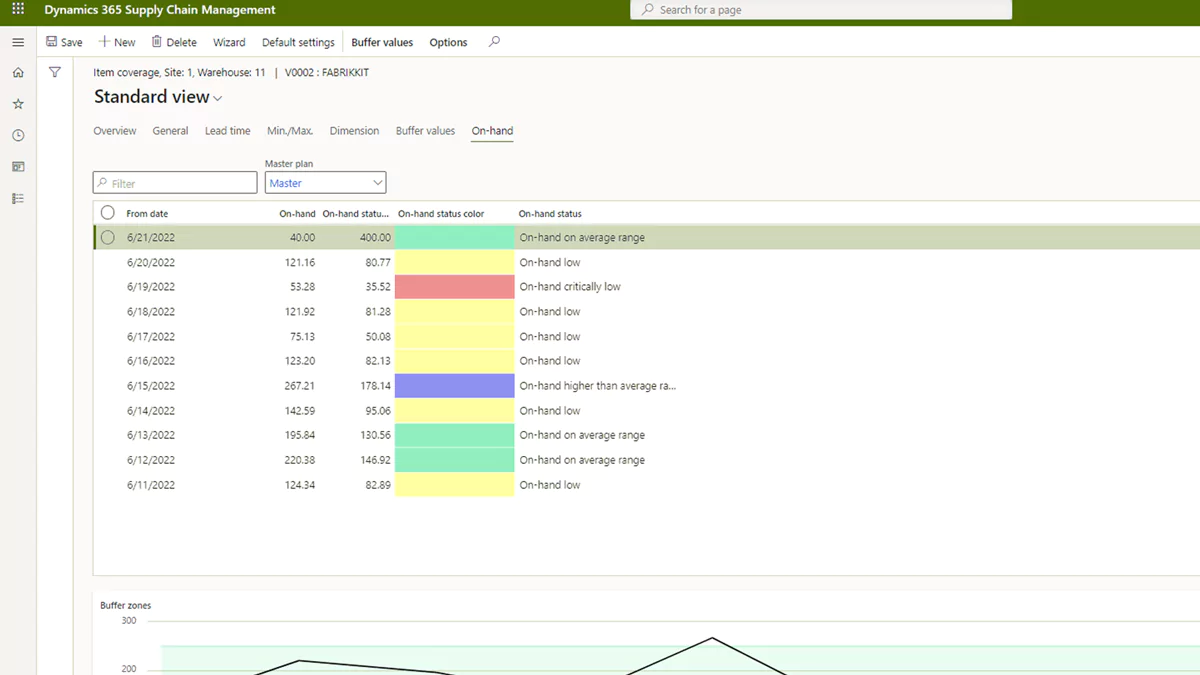Review the 2022 release wave 2 plans for Dynamics 365 Finance & Operations
Dynamics 365 Finance & Operations (F&O), comprised of Dynamics 365 Finance and Dynamics 365 Supply Chain Management (SCM), receives two waves of new features and enhancements from Microsoft each year. In this post we will highlight some key features and enhancements that are planned to be released between October 2022 through March 2023 for:
Dynamics 365 Finance
Invoice capture with OCR
The utilization of Optical Character Recognition (OCR) is increasingly becoming popular for importing invoices into Dynamics 365 Finance. However, current limitations such as incomplete functionalities, data inconsistency, and poor performance have been identified, which Microsoft is addressing with updates to the OCR system.
These updates will be available for public preview in October 2022, as part of the 2022 release wave 2, and will offer the following capabilities:
- Advanced Configurations – Microsoft is introducing advanced configuration settings to provide flexibility in meeting various business needs of customers. Organizations can define minimal data requirements when creating vendor invoices, set quality standards for invoice data, and determine rules for manual reviews, among other settings.
- Deployment Wizard – With the deployment wizard feature, organizations will have access to an out-of-the-box OCR solution for vendor invoice processing, significantly reducing the effort required for data entry. This feature also includes a step-by-step guide for deploying the solution with ease.
- Image File Management – The image files workspace feature allows users to review an image file’s status before sending it to staging. Users can perform a pre-check before sending files to recognition services, schedule a batch process to send image files to the recognition service and trace all the state changes of an image file.
- Vendor Invoice OCR Hub – The OCR hub feature will serve as the central location for users to manage and process vendor invoice data that was entered through OCR. While most invoice data will be processed automatically, users can also review and edit invoices manually from the user interface.
Year-end close optimization & enhancements
Microsoft continues to improve the year-end closing process for Dynamics 365 Finance and Operations, with more enhancements in the 2022 release wave 2. These enhancements to year-end close in Dynamics 365 Finance will provide businesses with greater control and flexibility in managing their financial processes. These improvements are designed to improve performance during the year-end process and include the following:
- Detailed Balance Sheet Financial Dimensions – Users can now specify balance sheet financial dimensions in detail when closing the year, similar to the capability available for profit and loss accounts.
- Improved Performance – Overall performance has been enhanced to ensure the year-end close process runs more efficiently.
- New Setup Page – Year-end closing templates are now created on a new setup page for improved management.
- Reverse Year–End Close – The system now allows users to reverse a year-end close by selecting the most recent fiscal year and clicking the Reverse Year-End Close button, which will delete the accounting entries for the previous year-end close.
- Required Voucher Numbers – Voucher numbers are now required when closing a year.
- History and Audit Trail – The system now maintains a history and audit trail of previously closed years by company and year.
Subscription billing improvements
In the 2022 release wave 2 of Dynamics 365 Finance, Microsoft will release new features and enhancements to the subscription billing solution.
- Quotation enhancements – Enhancements to Subscription billing – Recurring contract billing enables generating sales quotations using the pre-existing quotation report from a Billing schedule. Along with generating the quotation report, data is stored in existing Sales quotation tables so you can reprint quotations.
- Split billing – Split billing allows for multiple customers to be billed from a single contract with a single billing schedule for each customer. It also defines their responsibility. By specifying multiple customers on a billing schedule, an invoice can be produced for multiple customers from a single billing schedule.
- Project billing for stocked or production-based scenarios – Microsoft will release new features to help manage subscription-based services. These features include the ability to define and manage billing schedules, to record unbilled revenue based on the contractual agreement, and to defer costs and revenue and then recognize them based on the required schedule. With this update, Dynamics 365 Project Operations for production or stocked scenarios will support these features.
Globalization Studio
Globalization Studio is the low-code tax compliance and globalization platform that enhances Microsoft’s compliance and globalization capabilities with out-of-the-box multi-country content. In the 2022 release wave 2, Microsoft will enhance the Globalization Studio with the following updates:
- Improved import experience – This release will improve the user experience for importing configurations with missing dependencies to allow for a quicker deployment of Electronic reporting (ER) configurations.
- Switch a base data model in electronic reporting – This feature empowers business users to change the base Electronic reporting (ER) data model for a derived format and mapping. This functionality may be needed when a derived format or mapping is initially created based on the original data model and you need to use a custom data model at some point after.
- Tax calculation service – This feature enables the batch input function of tax codes in tax group setup and item tax group setup. You can add criteria to select multiple tax codes with advanced operators. There are four advanced operators introduced in this feature: is, is like, begins with, and ends with.
Dynamics 365 Supply Chain Management
New features for Inventory visibility
Inventory visibility is a vital aspect of any business, and in the 2022 release wave 2 of Dynamics 365 Supply Chain Management, Microsoft will introduce several enhancements and updates to the Inventory Visibility add-in. Here are the details:
- Soft reservations – Soft reservations enable a temporary deduction of inventory based on the quantity and product dimensions specified in a sales order. The reservation occurs before the order is released to the warehouse, allowing businesses using WMS to make soft reservations regardless of whether warehouse hierarchies are specified in the order.
- Inventory allocation – With inventory allocation, channel sales planners or sales account managers can pre-allocate on-hand inventory to tailor channel demands or fulfill requests from key corporate customers. Allocation occurs before sales transactions, taking place before any physical warehouse work.
- Preload streamlined on-hand inventory lists – The Inventory Visibility service now stores on-hand inventory details that are filtered based on configurable business criteria to ensure that only the most relevant information is included. These filtered on-hand inventory lists are stored locally in the Inventory Visibility service and are regularly updated to support quick access, on-demand data exports, and streamlined integration with external systems.
Real-time tracking of soft reserved quantities in allocations
Organizations often need to track real-time consumption within allocated quantities for each store or web market. The current allocation feature allows you to plan the apportionment of your available on-hand inventory. But obtaining the physical consumption data from your ERP system can take a long time due to data sync latency. In the 2022 release wave 2, Microsoft will enhance users ability to track actual booked quantities by demand in real time to achieve the following goals:
- Avoid oversell – The ability to make soft reservation requests against allocated inventory will prevent you from posting additional soft reservation requests when you don’t have enough allocated inventory left.
- Monitor overstock situations to optimize future allocation plans – You can easily compare soft-reserved quantities against what’s left in inventory pools allocated to individual channels or B2B customers.
- Better protect your allocated inventory – By minimizing oversell situations within each allocation channel, group, and/or customer, you will also better protect your allocated quantities.
Warehouse Management mobile app
The 2022 release wave 2 includes warehouse management mobile app enhancements that simplify the implementation and configuration experience while providing insights into system performance and usage.
- Improved search capabilities – The mobile app now allows workers to search for and select related records from a list rather than entering data manually.
- Multilevel detours – This release extends the existing detour (pause tasks) capability by letting you define multilevel detours (detours within detours).
- Pack shipments – The mobile app now provides warehouse workers with the freedom to move around while performing their packing activities.
Planning Optimization
In the 2022 release wave 2, Microsoft will release planning optimization enhancements that add support for more process manufacturing scenarios, increase planning accuracy, and help users respond quickly to changes.
- Make-to-order supply automation – With this feature users can automate and streamline order taking and the related supply process for make-to-order (MTO) scenarios. They benefit from improved capable-to-promise (CTP) accuracy with plan-specific delay tolerance, keep supply available for last-minute orders, and populate external order information during intercompany trade.
- Supply forecasts – Planning Optimization can now provide more accurate planning by incorporating supply forecasts into its calculations. Supply forecasts are typically used to ensure that a certain minimum quantity is purchased or produced during each period, regardless of the demand.
- Finite material scheduling – With finite material scheduling, you can specify the materials required to produce a product and use these as a basis for calculating the production schedule. By taking both resource capacity and the availability of materials into account, the system can schedule production according to these restrictions.
- Process manufacturing scenarios – Process manufacturers can now use Planning Optimization to get near real-time insights into requirement changes during office hours, made possible by in-memory processing. The solution enables master planning to include supply from processes that output co-products and by-products.
Improvements to Sensor Data Intelligence
The Sensor Data Intelligence Add-in allows organizations to leverage sensor data from production floor equipment to drive business processes. With the 2022 release wave 2, Microsoft is introducing new functionality to extend the add-in’s capabilities to support a wider range of use cases, including:
- Predictive maintenance – The add-in uses sensor data from critical control points on machine assets to improve maintenance plans, minimize costs, and extend the life of assets.
- Asset downtime tracking – Users can now track the efficiency of machine assets more accurately by leveraging sensor data to monitor and report on machine downtime.
Want to learn more?
The new features and enhancements listed above are only a few highlights included in the Dynamics 365 Finance & Operations 2022 wave 2 release. For all enhancements included in this wave, you can review Microsoft’s documentation for new and planned features for Dynamics 365 Finance and Dynamics 365 Supply Chain Management.
Users can start exploring these new features and capabilities. Additionally, many Dynamics 365 users rely on a Microsoft partner for assistance reviewing the most impactful updates. The right Dynamics 365 partner helps users identify the features most beneficial to their organization and provides training for users to maintain peak performance.







